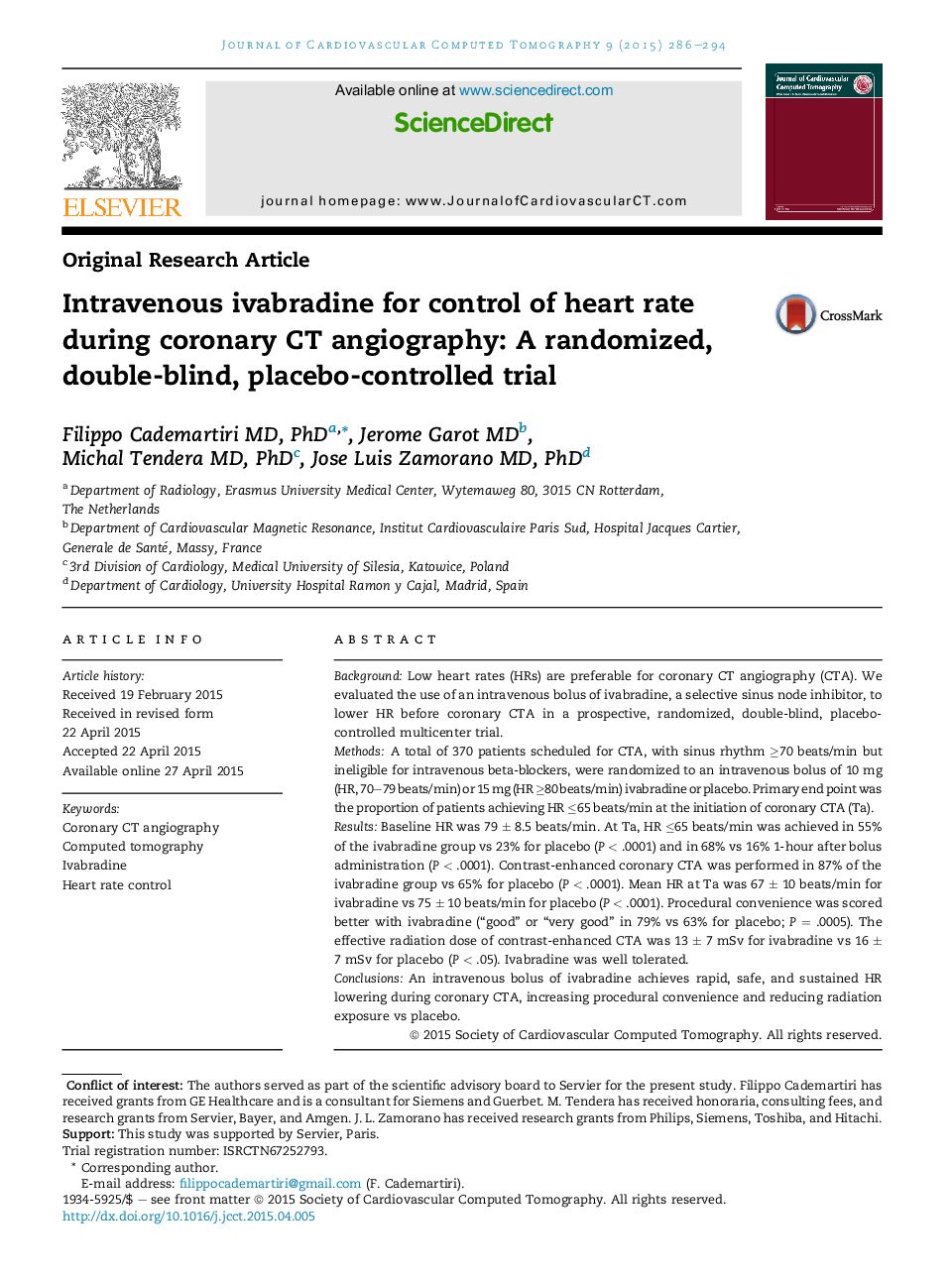| Article ID | Journal | Published Year | Pages | File Type |
|---|---|---|---|---|
| 2964302 | Journal of Cardiovascular Computed Tomography | 2015 | 9 Pages |
•Intravenous ivabradine reduces heart rate when beta blockers are contraindicated.•The average reduction in heart rate achieved is 11 beats/min.•IV ivabradine is safe, the most frequent side effect being transient phosphenes.
BackgroundLow heart rates (HRs) are preferable for coronary CT angiography (CTA). We evaluated the use of an intravenous bolus of ivabradine, a selective sinus node inhibitor, to lower HR before coronary CTA in a prospective, randomized, double-blind, placebo-controlled multicenter trial.MethodsA total of 370 patients scheduled for CTA, with sinus rhythm ≥70 beats/min but ineligible for intravenous beta-blockers, were randomized to an intravenous bolus of 10 mg (HR, 70–79 beats/min) or 15 mg (HR ≥80 beats/min) ivabradine or placebo. Primary end point was the proportion of patients achieving HR ≤65 beats/min at the initiation of coronary CTA (Ta).ResultsBaseline HR was 79 ± 8.5 beats/min. At Ta, HR ≤65 beats/min was achieved in 55% of the ivabradine group vs 23% for placebo (P < .0001) and in 68% vs 16% 1-hour after bolus administration (P < .0001). Contrast-enhanced coronary CTA was performed in 87% of the ivabradine group vs 65% for placebo (P < .0001). Mean HR at Ta was 67 ± 10 beats/min for ivabradine vs 75 ± 10 beats/min for placebo (P < .0001). Procedural convenience was scored better with ivabradine (“good” or “very good” in 79% vs 63% for placebo; P = .0005). The effective radiation dose of contrast-enhanced CTA was 13 ± 7 mSv for ivabradine vs 16 ± 7 mSv for placebo (P < .05). Ivabradine was well tolerated.ConclusionsAn intravenous bolus of ivabradine achieves rapid, safe, and sustained HR lowering during coronary CTA, increasing procedural convenience and reducing radiation exposure vs placebo.
